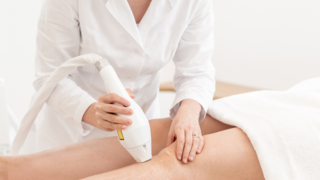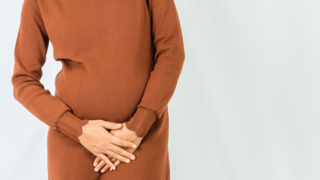In this article:
But here's a fact that will prevent you from being scared every time you go to pick up your newborn: You cannot harm a baby. That small, helpless infant is a very strong and resilient little person. And you won't end up yanking their arms out of their sockets or breaking those tiny toes and fingers just by changing their outfit, rocking them to sleep, or bathing them (wet babies are extremely slippery, so you'll need to get a good grip) — no matter how clumsy you feel while handling them.
Some of these concerns may be:
- How do I support the baby's head?
- How can I support a baby's head when scooping up?
- How can I support a baby's head when laying them down?
- How to support a baby's head in the bath?
- How can I tell friends and family how to support my baby’s head when they ask to hold the baby?
- How can I support the baby’s head while dressing and undressing the baby?
Handling Your Newborn Baby
Some parents may be worried about holding a new baby, and this apprehension may affect anybody, particularly those who have never had children. Supporting the baby's head is critical until the infant's muscles have grown adequate strength; otherwise, the baby would be frightened and afraid of being dropped, known as the Moro reflex. This is why it might be difficult to relocate a sleeping infant without disturbing them. They wake up when they are placed down!How To Support Your Baby's Head When Picking Them Up?
First, ensure that you are stable and aware of any potential safety concerns in your surroundings. Then, move your hand such that the palm supports both the head the neck, and the upper spine. Your fingers should be cupping the bottom half of the head (don't attempt to support it from the side). The neck functions as a flexible hinge; if the upper spine is not kept in place, the infant may fall through the space between both hands. Keeping your infant calm and undisturbed becomes an essential aspect of raising your child. A relaxed infant typically implies that parenting is simpler, less exhausting, and much more joyful for everyone. You may easily pick up and transfer your infant fifty times each day, which might strain your back. Typical activities include car rides, baths, feeding, changing, visiting family and friends, and cuddling.
It's a delicate survival instinct that evolved over millions of years. Unfortunately, it has no concern for how exhausted you are, but it will activate the instant your baby's head is disrupted since the baby believes they are about to be dropped and will instinctively cry in reaction. Your baby may be completely asleep when you put them down, but as soon as you pull that last finger off their head, a primal scream begins, and you're back to square one, attempting to calm your baby, which may be tiring.
It's probably why we're concerned about not supporting their heads correctly. However, there is one innovative invention that addresses the age-old issue of head support and the ability to reposition a baby without disturbing their sleep. It's a comfortable blanket that functions as a hammock, and the head cannot return to its original position. It saves your back, but the most important advantage is that while holding your baby's head, the transfer is so smooth that your baby does not wake up!
This means you get more done while your baby receives more valuable developmental sleep. The benefits are many, including back support, postpartum recovery assistance, and the elimination of the need to transport your car seat. Keeping your infant out of car seats lowers the risk of flat head syndrome and hypoxia. Who would have guessed that a device initially intended for head support and transferring a baby without awakening them could have so many uses?
Tips For Safely Handling And Holding A Baby
1. Carry the infant like a football
While it may seem goofy at first, cradling your baby like a football, with their back against your forearms and their head tucked in the crook of one of your arms, is one of the safest and most sustainable ways to carry a newborn. Angle the baby's stomach towards yours. This posture is more pleasant for the infant and allows you to hold your newborn more securely, particularly when sitting.2. Be mindful of the baby's soft spot
Newborns have two soft places on their heads: the posterior fontanelle in the rear and the anterior fontanelle on top. The bones in certain parts of the skull have not fully cemented together, allowing the baby's head to pass through the birth canal. It also provides an area for the brain to expand.The soft place at the rear will heal in a few months, whereas the region on top may take two years to completely shut. Touching these sensitive regions is normal; however, do not push down or allow anything to strike or fall on your baby's skull, since no bones adequately protect the brain early in life.
3. Hold your infant upright after feeding
Burping your baby after feeding requires upright placement, and they may prefer to sleep upright on your chest while you stand or sit.Instead of setting your baby down flat after feeding, keep them upright for 30 minutes to help them digest their meal. Otherwise, they are more prone to vomit up. With their stomach towards your chest, position their head near your shoulder, one arm supporting their bottom and the other supporting the back of their head and neck.
4. Before you touch a baby, wash your hands
Hand hygiene is critical while holding your infant, particularly during the first two months. During this period, your infant has not been immunised against illnesses that may be transmitted by germs on unclean hands.Newborns have weak immune systems; it takes time for them to develop resistance to infections that are unlikely to harm you or your loved ones. So, be extra careful to keep your hands clean, and don't feel bad asking guests to do the same.
5. Ensure the umbilical stump is clean and dry
A little clump of tissue will remain connected to your baby's belly button after doctors cut the umbilical cord after delivery. They will apply a little clip to keep it dry till you leave the hospital. It seems strange, but it will fall off in its own time - generally within two to three weeks.The umbilical stump is best left alone. It may get infected if left dirty, so keep it clean and dry. Only garments should cover it; do not use a bandage or the baby's diaper. If it becomes dirty, clean it with water and soap devoid of scents and colours. If you see redness or discharge surrounding the stump, it may be infected and should be treated immediately.
Avoid These Unsafe Movements And Positions
1. Do not lift your infant by or below their arms
Your baby's head and neck muscles are quite weak throughout the first several months. Picking them up beneath their arms may cause injury to their arms or shoulders. Worse, their head will hang and bounce about, perhaps resulting in brain damage.Instead, put one hand behind their head and neck, and the other under their bottom. Gently bring the infant up to your chest. To increase stability and preserve your back, bend your knees as you move forward and lift with your legs.
2. Do not bounce a fussy newborn
New parents may attempt to comfort their infant by holding the baby upright on their shoulder and bouncing up and down. Though we've seen this technique a lot in movies and TV comedies, it's not an effective approach to quieten a fussy infant.The up-and-down action may be unpleasant and make the baby fussy, which can heighten your anxiousness, which can further stress the infant - it's a vicious cycle. Instead, take the football grip and gently rock them back and forth while walking or standing. The flowing movement soothes newborns by mirroring their experience in the womb.
3. Do not extend the baby forward to anybody else
If you have friends and relatives coming or helping you after giving birth, you will rapidly get used to everyone wanting to hold the baby. When handing your infant to someone else, the most important thing to remember is to protect their head and neck.Rather than holding the infant in front of you, have the other person come near and face you. They should then put one hand behind the baby's head and the other beneath the bottom before releasing their grasp.
4. If you are fatigued, avoid sitting or lying down to cradle the infant
Fatigue and motherhood go hand in hand, particularly in the beginning. However, if you're drowsy and sitting, the chances of dropping your baby rise. While you are still in the hospital, notify the nursing staff that you are getting sleepy. They can help you place the baby in the bassinet or transport them to the nursery while you relax.When you are exhausted at home, put your infant in their allocated napping location. If you doze off, you may lose your grasp in a matter of seconds, so exercise caution.
5. Do not kiss your infant if you have a cold sore
The temptation to kiss your baby's pudgy cheeks and nose will be overwhelming, but if you have a cold sore, ignoring the desire might save your baby's life. Cold sores, commonly known as oral herpes, are caused by the HSV-1 (Herpes simplex virus type 1)virus, which may cause brain damage or death in infants since their immune systems are unable to heal the infection.An HSV-1 epidemic develops even before a cold sore occurs. So, if you experience the familiar tingling that occurs before a cold sore begins, or if you have recently had a cold sore, avoid kissing the infant until the outbreak has fully recovered. Firmly remind everyone else who will be handling your infant to follow the same rules.
Exploring the early days with your infant may be difficult, but knowing how to properly hold and manage your baby is critical to their safety and comfort. With experience and confidence, you'll quickly find yourself comfortable caring for your child, making this wonderful time even more joyful.
FAQs on Handling Newborn Baby Head
- How do you support a baby's head?
Supporting the baby's head is critical until the infant's muscles have grown adequate power; otherwise, the baby would be frightened and afraid of being dropped, which is known as the Moro reflex. This is why it might be difficult to relocate a sleeping infant without disturbing them. - What areas of a baby's head should not be touched?
Avoid applying direct pressure on the fontanelle. The soft region is there to enable the baby's brain development, so treat it carefully. Use a softer touch when washing your baby's hair, use a light baby shampoo and be delicate around the fontanelle.






